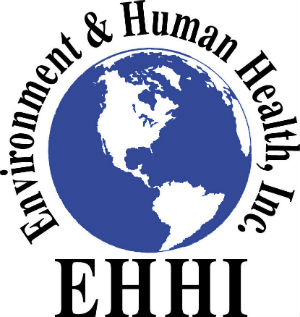A model for getting toxic tire mulch removed from children's playgrounds
In September 2017, Environment and Human Health, Inc. (EHHI) embarked on a new project 12 Steps to a Healthier School. On this project EHHI visited 169 CT municipalities and 69 CT local health departments and superintendents of schools. The new brochure that lists 12 ways to make schools healthier environments for students was brought to, and discussed with all offices visited. The Connecticut Health Foundation underwrote the writing and printing of the brochure. The project ended in 2018. * EHHI visited 169 municipalities in Connecticut this year. We went to the local Superintendent of School offices and the 69 corresponding Health Departments for these towns and cities. * EHHI asked the Superintendents of Schools in each district to share the brochure with their Boards of Education and/or the community. * On our visits, we collected information about whether the school or the town had any playgrounds surfaced with rubber mulch. We also emailed the Facility Managers in the towns to see about the towns' or schools' playgrounds. * In total, EHHI received responses from 91 (54%) school districts and 73 (43%) towns. * From the information collected, we identified 12 rubber mulch playgrounds in Connecticut. They are: Importantly, there are no rubber mulch playgrounds in the large municipalities of Bridgeport, Hartford, New Haven, and Norwalk. These communities have playgrounds surfaced with wood chips or wood chips with rubber safety mats. Some have poured-in-place rubber surfaces which make them available for use for those who have disabilities. Other large municipalities have not been responsive to our queries, to date. EHHI has written to the towns that do have rubber mulch surfacing in their playgrounds and asked that the rubber mulch be removed. We have also asked them to let us know when the rubber mulch is removed.
Ansonia responded with information that their town is working toward total removal of the rubber mulch surfacing. In Scotland we spoke to the school principal and had a follow-up email exchange about the safety and funding for a new playground. * EHHI has maintained call sheets and an Excel spreadsheet on contact information as well as where the rubber mulch surfaces are in Connecticut.
. * So far, everyone has been very receptive to our brochure and our information about playground safety. Details and Process Notes: EHHI's Healthier Schools Brochures have been distributed to Superintendents of Schools and Health Directors representing every community in Connecticut. We have distributed the brochures in person, asking the districts to share the information with the Board of Education or anyone else appropriate in their community. In addition to brochure drops, we have sent emails to Health Directors before and after the visit to their office and to the office of the Superintendents of Schools. The emails include information about EHHI, about rubber mulch playgrounds, and a link to the brochure. In that way, they can share the brochure electronically or download and copy it.
EHHI's 12 Steps to a Healthier School Project Report
* EHHI emailed the towns before and after the visits to Health Directors and after the visits to Superintendent of Schools.
As an aside, we have also reported idling school buses in two districts: Orange and Easton. Both issues were resolved positively.
EHHI has also distributed brochures to ACES in North Haven (Area Cooperative Educational Services). They are the Regional Educational Service Center (RESC) for the twenty-five school districts in south central Connecticut.
Additional information about Connecticut:
Some municipalities are within shared regional school districts or health districts.
Some school districts may have an elementary school superintendent as well as taking part in a regional school district.
A few small towns have their Parks and Recreation Department or the Department of Public Works maintain their school playgrounds. Larger school districts maintain their own facilities, including their playgrounds.
The rubber mulch playgrounds we have identified seem to be older playgrounds. For instance, the two in Scotland were installed before 2006 and were installed to satisfy NAEYC (early childhood) requirements at that time for facilities serving preschool children.
